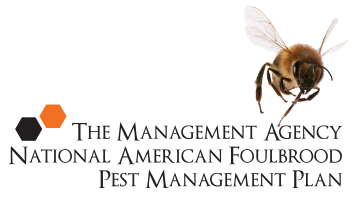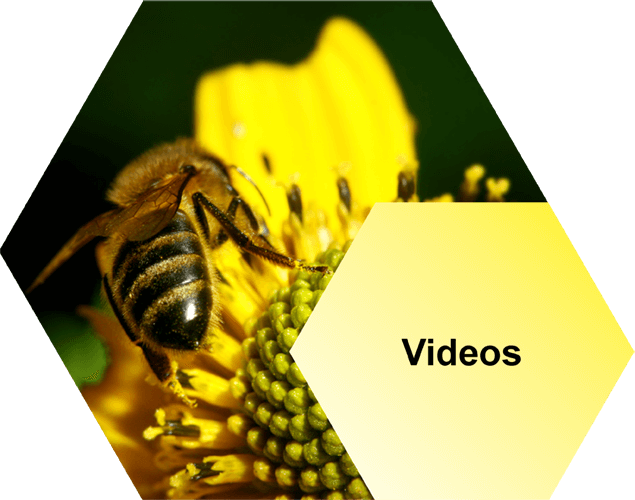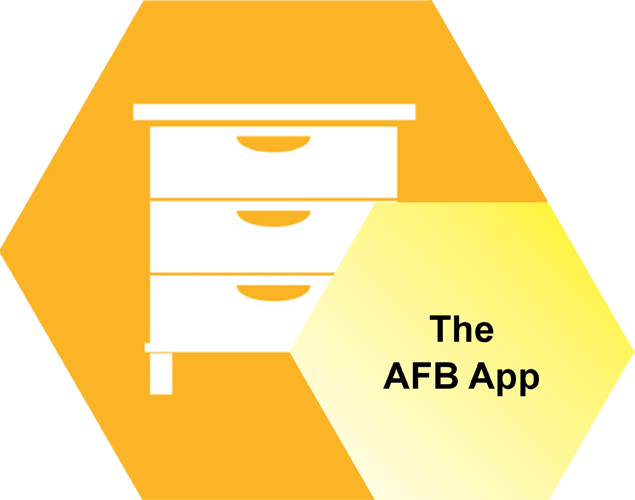Chalkbrood
What is chalkbrood?
Chalkbrood (Ascosphaera apis) is a fungal disease affecting honey bee brood. As in AFB and sacbrood, the disease kills brood in the late larval (prepupal) stage, when the larva has laid out fully along the bottom wall of the cell. Unlike sacbrood, however, the symptoms of chalkbrood are quite distinct and much easier to differentiate from AFB.
The only symptom resembling AFB is the presence of perforated cappings, which are identical in appearance to both sacbrood and AFB, and as with these diseases the bees chew the cappings off when they identify a diseased larva beneath.
Difference to AFB symptoms
Chalkbrood infected larvae turn a vivid white that is much whiter and “chalky” in appearance than the colour of healthy brood (Fig. 46). At this stage they have a furry surface because of the fungal strands growing on the dead larvae.
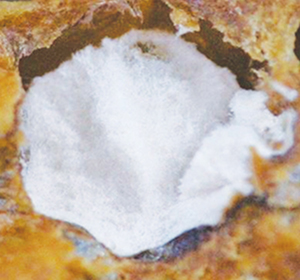
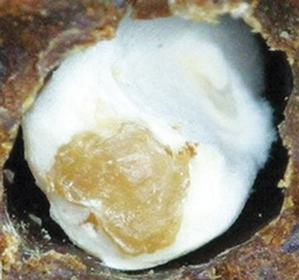
If the larvae are removed, they are moist, hexagonal-shaped and swollen. In most cases, the head-end of the larva appears clearly as a dark spot in the remains (Fig. 47). When chalkbrood infected larvae are removed with a stick, they never rope out of their cells.
In the honey bee colony, chalkbrood infected larvae dry out over time and become hard chalky lumps called “mummies” (Fig. 47-50). These remains are mostly white, often with yellow heads. Some mummies turn partially or completely grey or black. The colour change is the result of fruiting bodies, which produce the fungal spores. These spares are the infective stage of chalkbrood disease.
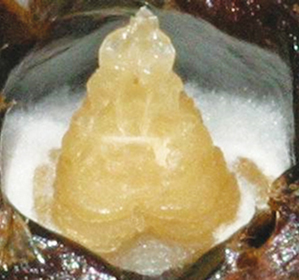
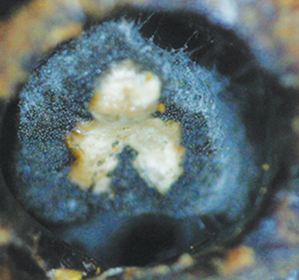
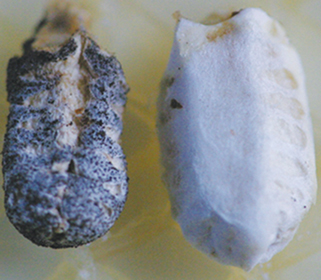
Chalkbrood mummies are often removed by house bees and are sometimes found either on the bottom board or in front of the entrance of the hive (Fig. 50). Combs with heavy infections of chalkbrood will rattle when the mummies are sufficiently dry. At this stage the mummies can easily be removed just by shaking the comb.
AFB infected larvae do not turn either chalky white or grey, and do not dry down into easily removed mummies. The only condition in the hive that closely resembles chalkbrood is mouldy pollen. However, mouldy pollen is cylindrical or hexagonal in shape and is easily pulverised between the fingers, whereas chalkbrood mummies are more elongated, much flatter, and are not easily crushed.
Chalkbrood infected larvae are white or black, not coffee-coloured like AFB. Chalkbrood does not rope out like AFB and chalkbrood mummies can easily be removed from their cells.
Take the AFB 5 minute quiz
How well do you know what you need to know about AFB and beekeeping? Take our short quiz and find out.
Videos
Our videos cover everything from your legal obligations to how to recognise AFB, collecting cell and bee samples and more.
Symptoms
There’s a lot of good information here, telling you everything you need to know about recognising AFB: the visual symptoms, smell of AFB and more.
Inspection and Diagnosis
Successfully eliminate AFB by telling the difference between symptoms of AFB and other brood diseases in the hive. We tell you the best methods for inspecting your hives.
The Law
New Zealand beekeepers have a number of legal obligations that must be met regarding AFB disease. Read the shortened list in summary, here.
Elimination
Most hives become infected because bees, honey or equipment have been put into a hive from another hive that is infected with AFB. Lower your chances of an AFB infection by reading this section.
AFB Recognition Course Info
Find out when the next AFB Recognition and Competency Courses, or Refresher Courses are available. These are held throughout the year in various New Zealand locations across the South Island and North Island.
The AFB App
Follow the link below to open the App. Once open to save to your device you need to bookmark the URL on your phone so you can find it easily again. Please click here to open.
